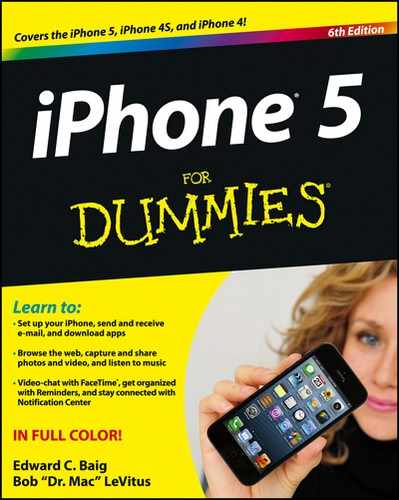Multitasking
Back when Apple introduced the iOS 4 software upgrade (which, of course, predated iOS 5 and iOS 6), the company added a bevy of important features, with the long-overdue multitasking feature arguably the most significant. Multitasking simply lets you run numerous apps in the background simultaneously or easily switch from one app to another. For example, music from a third-party app such as Slacker can play in the background while you surf the web, peek at pictures, or check e-mail. Before multitasking hit the iPhone, Slacker would shut itself down the moment you started performing tasks in another app. (Previously, Apple did let you multitask by, for example, playing audio in the background with its iTunes app. But multitasking was limited to Apple’s own apps, not those produced by outside developers.)
But that’s not all. If you use an Internet voice-calling app such as Skype, you’ll be able to receive notification of an incoming call even if you haven’t launched the Skype app. The multitasking feature also lets a navigation app employing GPS update your position while you’re listening to an Internet radio app such as Pandora. From time to time, the navigation app or Apple’s own Maps app, which arrived with iOS 6, will pipe in with turn-by-turn directions, lowering the volume of the music so you can hear the instructions.
And if you’re uploading images to a photo website and the process is taking longer than you’d like, you can switch to another app, confident that the images will continue to upload behind the scenes. We’ve also been able to leave voice notes in the Evernote app while checking out a web page.
Multitasking couldn’t be easier. Double-press the Home button, and a tray appears at the bottom of the screen, as shown in Figure 2-10, left. The tray holds icons for the most recently used apps. Scroll to the right to see more apps (see Figure 2-10, right). Tap the app you want to switch to: The app remembers where you left off. (Scroll all the way to the left and you’ll also see volume controls, AirPlay controls, and an orientation lock.)

Figure 2-10: Scroll the tray to see the apps you’ve recently used.
Apple insists (and our experience generally leads us to believe) that multitasking will not drain the iPhone battery or exhaust system resources. The iPhone conserves power and resources by putting apps in a state of suspended animation. But as we just mentioned, you can wake them up instantly and return to what you were doing.
Note that multitasking on the iPhone doesn’t work quite the same way as multitasking on a PC or a Mac. You can’t display more than one window on the screen at a time — given the size of the iPhone screen, you’d have trouble viewing multiple windows anyway.
Moreover, there’s some philosophical debate whether this feature is multitasking, or fast task-switching, or some combination. Rather than getting bogged down in the semantics, we’re just glad that multitasking, or whatever it is, is available.

 To remove an app from the tray holding icons of the most recently used apps — and thus remove the app from those in the multitasking rotation — press and hold your finger against any app until all the apps start to wiggle. Then tap the red circle with the white line that appears inside the app you want to remove. Poof, it’s gone.
To remove an app from the tray holding icons of the most recently used apps — and thus remove the app from those in the multitasking rotation — press and hold your finger against any app until all the apps start to wiggle. Then tap the red circle with the white line that appears inside the app you want to remove. Poof, it’s gone. Multitasking works only on iPhones dating back to the 3GS model. Older iPhones don’t have the resources to handle the feature.
Multitasking works only on iPhones dating back to the 3GS model. Older iPhones don’t have the resources to handle the feature.